How To Repair Rust Holes On A Truck
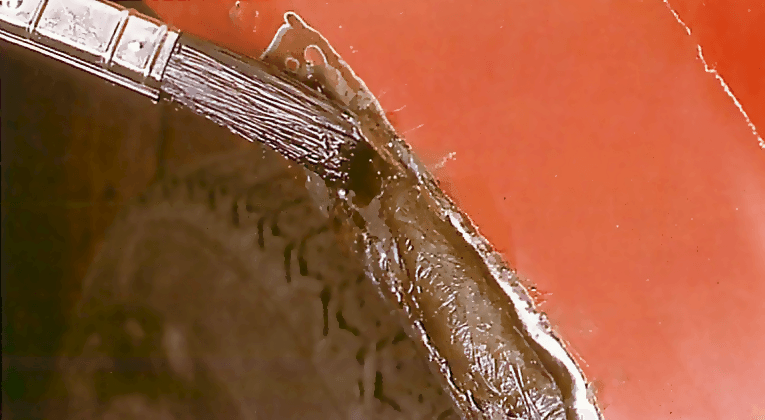
If a hole in the bodywork is not in a load-bearing area, such every bit a section of the chassis , it may exist repaired with glass fibre, trunk filler or the more recently introduced filler-fibre mixture.
There are proprietary kits available which incorporate all the materials necessary for making repairs. Many of the materials can also be bought separately from accessory shops, garages or specialist firms.
Employ an electrical drill fitted with a wire brush , sanding disc or flap cycle to have off the paint for about 2 in. (50 mm) all round the hole. Wear protective goggles to guard your optics against flying grit and paint dust.
Cut out any weak and rusted metal with can snips. If any traces of rust remain, treat the metal with a rust preventative (Run into Eliminating rust before painting ).
Bridging the gap
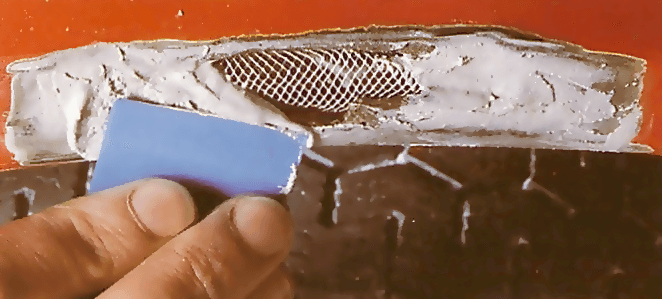
Tap the edges of the pigsty inward with the brawl of a small ball-pein hammer below the level of the panel.
Torso filler can be supported by a canvass of expanded zinc metallic fixed behind the pigsty. A suitable piece is unremarkably supplied in the repair kit.
Use tin snips to cut the expanded metal and so that it is near 1 in. (25 mm) larger than the hole all round.
Mix a small amount of trunk filler paste with the hardener from the filler kit. You can make it gear up quicker than normal by adding a petty more hardener than the kit instructions suggest. Simply exercise not deviate too far from the maker's instructions.
Put the metal sail behind the hole and fix it in position with small amounts of filler.
If you cannot hold the sheet from behind the hole, use wire hooks to pull it against the back edge until the filler that is fixing it has set or, depending on the type of hole, whorl the mesh into a tube shape and set up information technology firmly into position. Add filler to build up the contour .
Laying upwardly the glass fibre

Glass fibre tin can cause pare irritation to some people - wear rubber gloves when you handle it.
Utilize scissors to cutting out ii pieces of the glass-fibre mat and then that they overlap the edges of the hole past I in. (six mm) all round.
Mix the liquid resin, post-obit the instructions given with the kit.
Put a layer of glass-fibre mat in the pigsty from behind. Utilise an erstwhile paintbrush to dab the resin mixture on to the mat - both sides if possible - until the mat goes translucent.
If whatsoever resin drips on to the paintwork, wipe it off at once with a rag soaked in methylated spirit.
Put the 2d piece of mat over the rear of the first and add together more resin with the brush. Let the resin set hard. Fill in the remaining slight hollow with filler (Run across Smoothing out a dent ).
Using a filler-fibre mixture
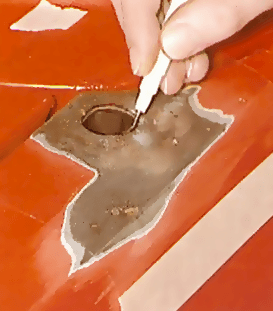
Some repair kits do not utilize a mesh bankroll. They reduce the stages involved past using a plastic cover sail to agree the combined filler and glass-fibre mixture to the aforementioned contour equally the body.
Prepare the hole in the style already described under Bridging the gap (left).
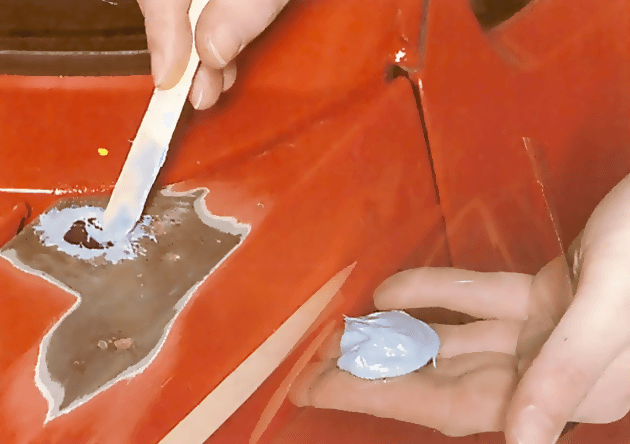
Put the plastic sail over the outside of the hole and fix one edge with a strip of newspaper masking record.
Trace the outline of the hole on the plastic sheet, and so fold the sheet back.
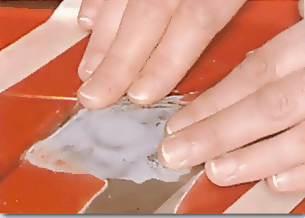
Add hardener to the filler mixture equally directed by the instructions with the kit. Put the mixture on to the plastic sheet, inside the marked expanse. Dab more mixture on the edges of the hole.
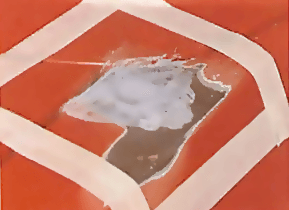
Hinge the plastic sheet back over the hole, press it against the pigsty, and tape down the other three edges. The plastic sheet should follow the body contours.
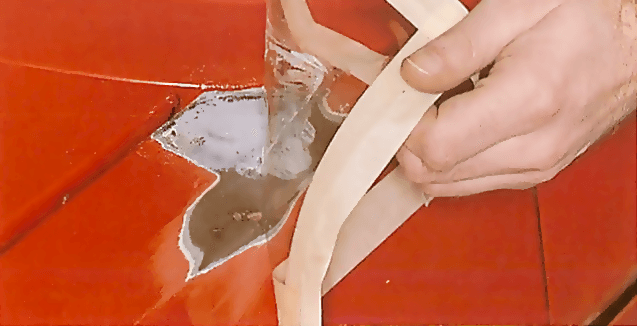
When the filler mixture has set hard, peel off the plastic sheet. Small marks left on the surface of the repair can be filled with small amounts of the mixture or can exist filled with paintstopper before the repaired expanse is sprayed.
How To Repair Rust Holes On A Truck,
Source: https://www.howacarworks.com/bodywork/patching-rust-holes
Posted by: morristiver1945.blogspot.com


0 Response to "How To Repair Rust Holes On A Truck"
Post a Comment